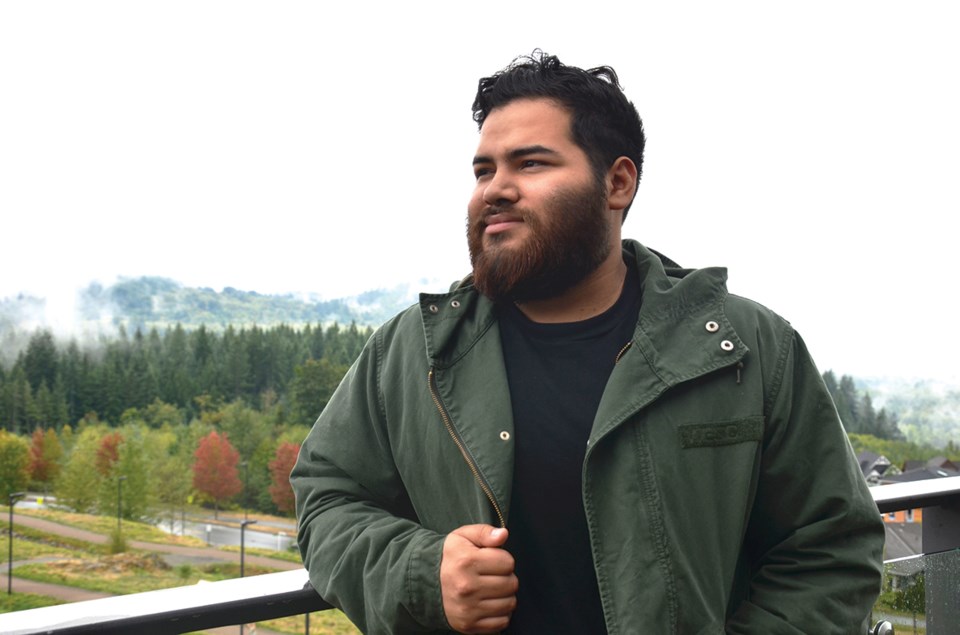This summer, Nexen Beach and Woodfibre marked the sites of pioneering research.
Quest student Camilo Romero set out to study the transfer of noise at industrial sites through land and into the aquatic environment. While scientists have examined noise pollution in the ocean and air, the geology student said he hasn’t heard of a study that aims to understand how construction and operation noise travels through land and into water. The study measured the real-time on-site movement and attenuation of acoustic energy both on-shore and in the marine environment.
“As far as we know, this experiment hasn’t been done before,” said the fourth year student, whose research was funded by Woodfibre LNG.
Nexen Beach and the Woodfibre site were carefully selected, Romero says. The proposed liquefied natural gas project at the former pulp mill site has garnered the provincial spotlight and divided Squamish residents. Romero hopes his study will provide insight for scientists to examine noise pollution effects on herring spawning locations and cetacean life.
The results of the research will be made available to backers of Woodfibre LNG, however, the study was conducted independently, Romero said.
“Our relationship with Woodfibre is only a financial agreement. I am a scientist, so I am looking for results. I will publish what is true. It is not touched by Woodfibre at all,” he said, adding the work was reviewed by a panel of Quest professors.
Romero devised an analogy for the level of noise industry would emit. He used hydrophones and geophones to measure decibels and millivolts. The study detected frequencies within the 4,000-hertz range. The commonly stated human hearing range runs from 20 to 20,000 hertz.
“Basically, we were looking at whether the signal does enter the water and what the low and high frequencies look like,” Romero says.
In neither of the locations did the hertz range extend beyond 4,000, he said, noting that the measurements were much lower. Preliminary results of the study did expose transmission occurring at Nexen Beach. The signal was measured at about 0.1mV and under 100dB – not high enough to require remediation at this point, Romero said.
“It would have had to been at least 100 times higher before we begin to talk about noise suppression,” he says, noting kiteboarders produced more noise than the results.
At Woodfibre, existing ambient noise in the water masked the signal, Romero says.
“We thought it might be the outflow of the river or the hydro dam,” he noted.
Romero considers the study a success. He was able to record results and collect data.
“As a researcher, that is all you could really hope for,” he said.
Romero aims to keep working on the study as a part of his Quest Keystone project, a thesis-like project all the university’s students are required to complete. He wants to pursue a career in environmental consulting.



